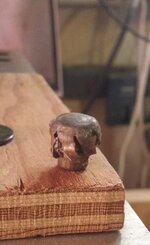Over the years Ive been cautioned by other hunters for using the 25-06 to hunt elk with as being "too light".
So I just did a quick and very rough comparison of 3 different common calibers I would call elk calibers with factory ammunition from Hornandy and Federal websites. I compared velocity, energy and trajectory of the 25-06, with the 270, 7mm MAG, and 30-06. and found the numbers not all that different from each other....
Some interesting numbers, roughly speaking...
So I guess my question is, if all other things being equal (shot placement, distance) does any small difference in ballistics matter?
So I just did a quick and very rough comparison of 3 different common calibers I would call elk calibers with factory ammunition from Hornandy and Federal websites. I compared velocity, energy and trajectory of the 25-06, with the 270, 7mm MAG, and 30-06. and found the numbers not all that different from each other....
Some interesting numbers, roughly speaking...
- the 7mm Mag had the flattest trajectory (no surprise...)
- the 30-06 hit the hardest (ft/lbs) (I figured the 7mm would... being a "magnum" and all...)
- the 30-06 had the worst trajectory, (by up to 8" over the second worst .270 (at 500 yds))
- the 25-06 isn't much different than a 270
- at 300 yds and under, all these calibers are within about 2" trajectory of each other and within about 300 ft/lbs of each other... *
So I guess my question is, if all other things being equal (shot placement, distance) does any small difference in ballistics matter?












